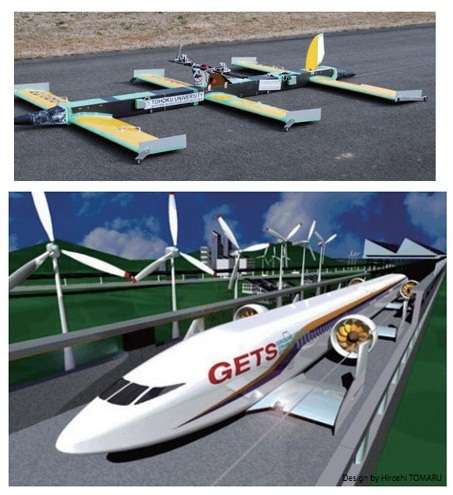May 12, 2011 weblog
Ground-effect 'plane-train' flies inches above the ground (w/ video)

(PhysOrg.com) -- By building a robotic ground-effect vehicle that flies inches above the ground, researchers from Japan may be offering a glimpse into the future of high-speed rail. The researchers, led by Yusuke Sugahara at Tohoku University, are currently testing the robotic prototype, which they have described earlier this week at the IEEE International Conference on Robotics and Automation (ICRA) in Shanghai.
As a ground-effect vehicle, the prototype uses the fast-moving air between the bottom of the vehicle and its track to fly above the ground. Usually, this air produces drag on planes as they’re landing, as well as on maglev trains, which levitate using electromagnets. But by taking advantage of this fast-moving air, the ground-effect vehicle can avoid the friction associated with rail contact, as well as avoid ground-effect drag.
With its stubby wings, the ground-effect vehicle is controlled more like a plane than a train, since factors such as pitch, roll, and yaw need to be accounted for. The researchers are testing the prototype to better understand autonomous stabilization in a ground-effect vehicle.
If the unmanned prototype works well, the researchers will develop a dynamic model of how ground-effect vehicles operate, and then use it to design and build a manned experimental prototype. Such a vehicle could travel at speeds of up to 200 kph (125 mph) around a U-shaped concrete channel.
In the future, the researchers envision building a large commuter rail system that they call the Aero Train. Ideally, such a system would be less expensive and more efficient than today’s maglev trains.
More information: via: IEEE Spectrum
© 2010 PhysOrg.com



















